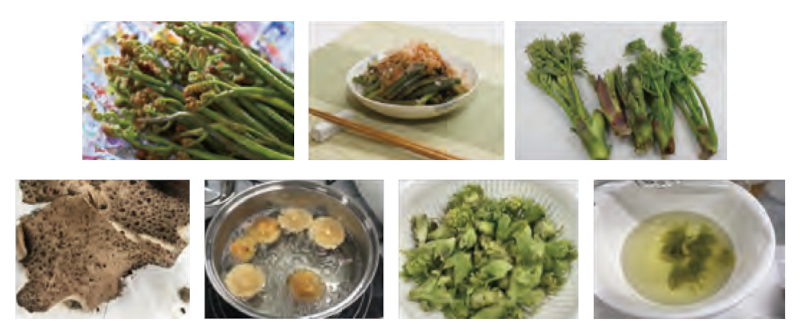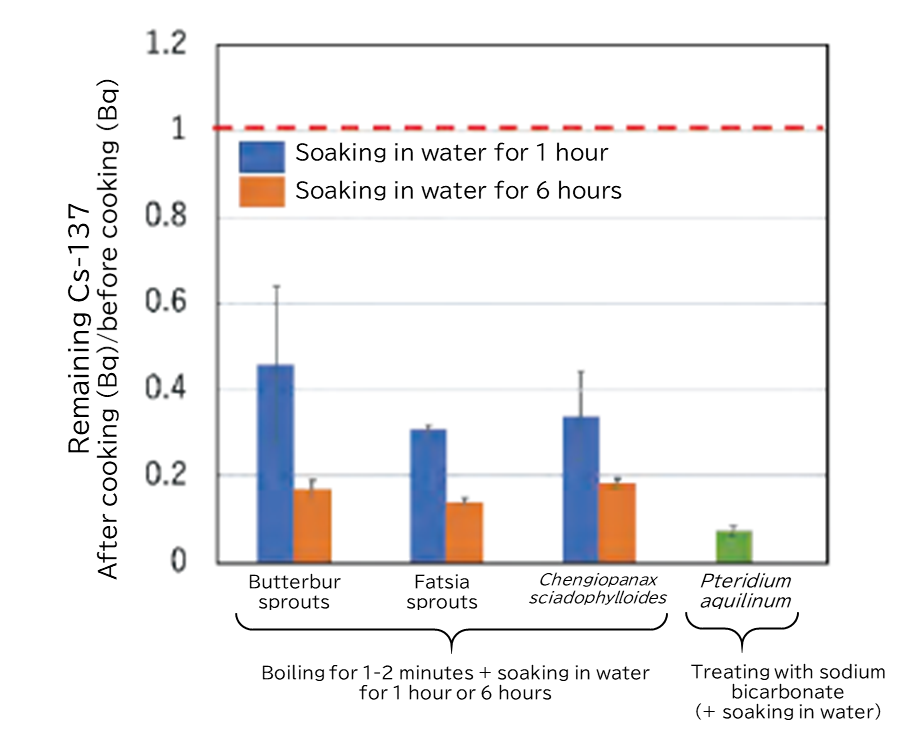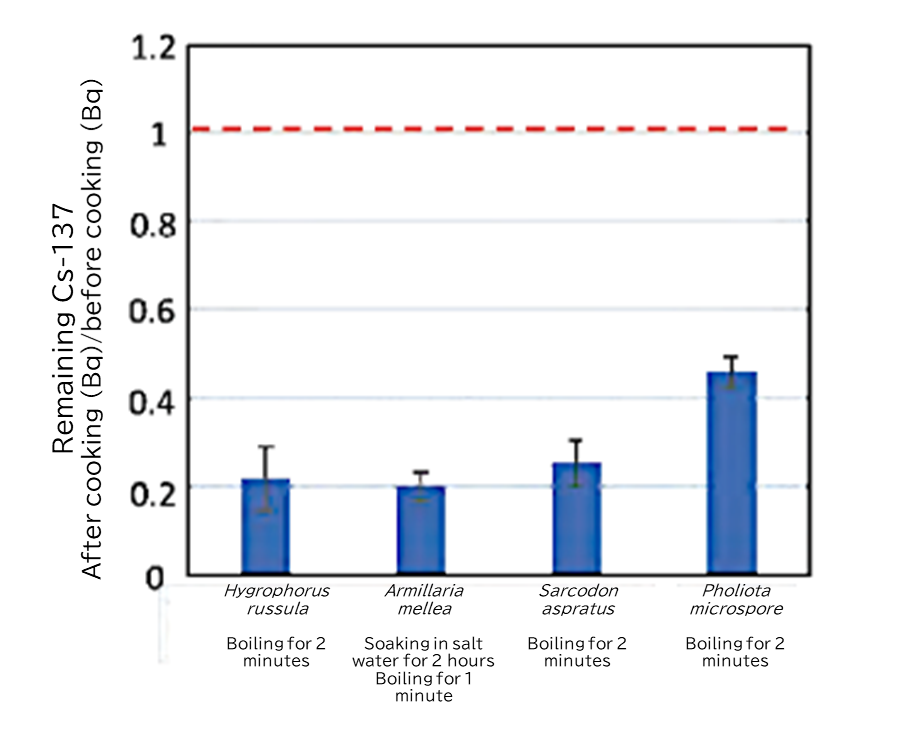Assessment of Exposure Doses and Decontamination
(2023)
QDoes radioactive cesium in edible wild plants reduce through cooking? If so, by how much?
AYes, it does. According to a study conducted by the National Institute for Environmental Studies on the reduction of radioactive cesium in edible wild plants and mushrooms through cooking, it was found that the amount of radioactive cesium in butterbur sprouts, fatsia sprouts, and Chengiopanax sciadophylloides reduced to less than 50% after boiling for 1-2 minutes and soaking in water. For bracken, the amount of radioactive cesium reduced to less than 10% after being treated with sodium bicarbonate.

Locals in Fukushima prefecture enjoy wild mushrooms and mountain plants in their diet. However, the accident at the Fukushima Daiichi Nuclear Power Station stripped them of that fun in some areas.
Targeting edible wild plants commonly consumed in Fukushima yet still have relatively high radioactive cesium concentrations, the National Institute for Environmental Studies conducted a study on the reduction of radioactive cesium by treatment or cooking, in order to find means to reduce internal exposure.
Study method
- Target wild plants :
Butterbur sprouts, fatsia sprouts, Chengiopanax sciadophylloides, Pteridium aquilinum - Target mushrooms :
Hygrophorus russula, Armillaria mellea, Sarcodon aspratus, Pholiota microspora - Cooking method :
Commonly practiced cooking method for the target wild plants and mushrooms (Boiling in salt water, boiling in normal water, soaking in water, drying + soaking dried products in water, treating with sodium bicarbonate, etc.)
* The ratio of solid to liquid in soaking or boiling is approx. 1:20 - Analysis :
[Before cooking] After washing with water, samples were placed in a container while keeping their original forms as much as possible
[After cooking] Samples were cut into small pieces and placed in a container
*Cs-137 was measured using a germanium detector (NaI scintillation spectrometer for bracken before cooking)
Test results
The figures below show the amount of Cs-137 left in the four wild plants and four mushrooms after cooking (ratio of the amount after cooking to before cooking).
-

Figure 1 Reduction of Cs-137 in edible wild plants by cooking
(Error bars are double the standard deviation) -

Figure 2 Reduction of Cs-137 in wild mushrooms by cooking
(Error bars are double the standard deviation)
For Butterbur sprouts, Fatsia sprouts, and Chengiopanax sciadophylloides, the amount of radioactive cesium reduced to about 30-45% after boiling in 1% salt water for 1-2 minutes and soaking in water for 1 hour. For Pteridium aquilinum, the amount reduced to less than 10% after treatment with sodium bicarbonate (Figure 1). The longer the duration of soaking, the smaller the remaining amount of radioactive cesium became. For mushrooms, the amount of radioactive cesium reduced to about 20-50% by boiling for 1-2 minutes (Figure 2). It is likely that cooking broke the tissues of edible wild plants and radioactive cesium eluted into water. The National Institute for Environmental Studies plans to extend the study to other wild mushrooms and other cooking methods.
(Research results of the National Institute for Environmental Studies. Reproduced from the proceedings of the oral and poster presentations at the 2022 Fukushima Prefectural Centre for Environmental Creation Achievement Report Session (partly edited by JAEA))
